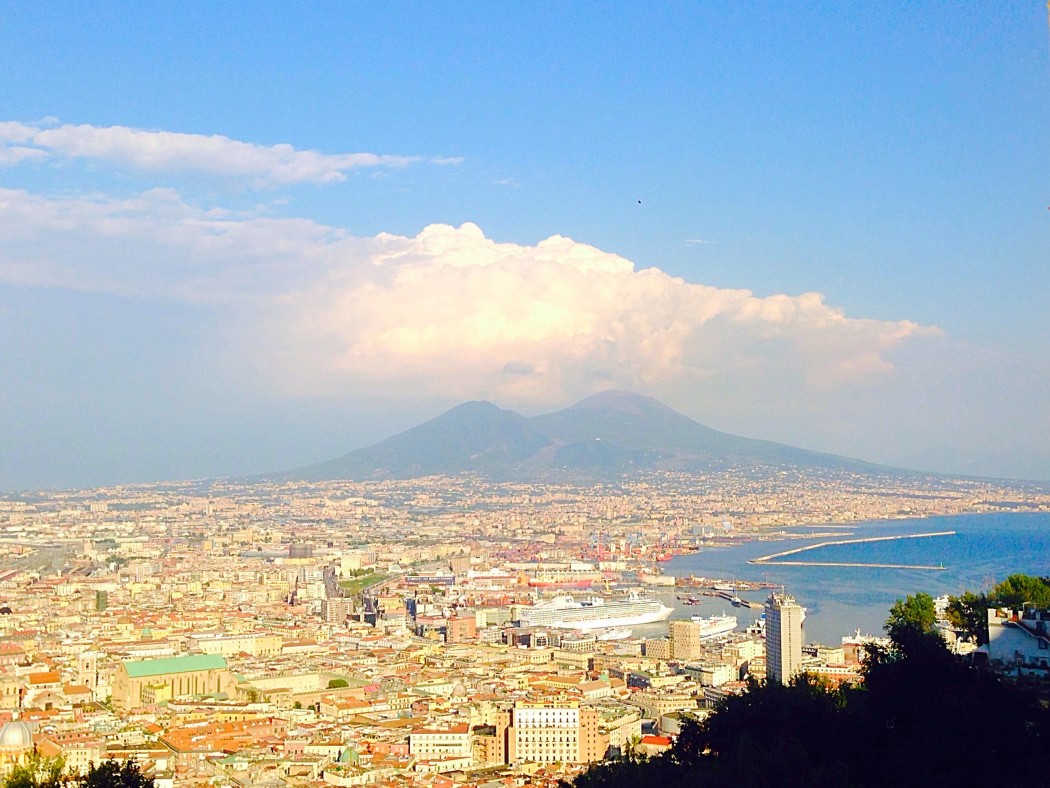I have been living in the UK for a while and still whenever I tell somebody my origins I look forward to hearing the answer, maybe taken for granted. But I just love the way the British pronounce those two words: pizza and camorra. With double “z” and double “r”, even better than “cappuccino”.
However, talking about Naples by making a list of monuments to visit, places to not miss out or typical dishes to taste, is similar to describe the features of a beautiful woman, with no knowledge of her skin perfume, or the usual smirk on her face when she smiles or cries or the sound of her voice when she tries to seduce a man.
No man will know and truly love that woman, as well as nobody will be able to discover the secrets of the alleys of the city born at the foot of Vesuvius by just seeing it, without jumping into its heart.
Be prepared, then, to experience a sort of unconventional beauty, through the traditions showed up by people’s gestures and routines.
If Naples were a perfume, it would be well structured, full bodied, aromatic, rich and strong as the espresso, served in the morning in a coffee shop, a few seconds after a glass of water aimed at “washing the mouth” before swallowing that sort of potion that allows you to start the day with the right foot.
Naples lies in the crowd of foreign or local people who walk along the alleys of San Gregorio Armeno, the historical centre where it’s Christmas all year long. Each merchant of the manger scene sculptures invites the passengers to come in, showing on the outdoor stands their sculptures that represent the most common characters in the Neapolitan and Italian history: football players, politicians, singers, actors.
Naples lies in the irony of the beggars at traffic lights who try to sell persistently napkins or paraphernalia of Naples football team. It is in the eyes of the women -mothers, daughters or wives - who hang out the clothes at their balconies, only a few meters away from the opposite one.
It lies in the beauty of Pompeii and Herculaneum’s ruins, both destroyed by the eruption of Mount Vesuvius in 79 AD, the most catastrophic volcanic eruption ever happened in the European history so far.
You can go forty meters below the lively streets of the centre of Naples and you’ll find a different world, unexplored, isolated but deeply connected with the world above. It’s the heart of Naples, and the place from which the city was born: Naples Underground. To visit it is to travel to the past, a 2400 years old world. Every episode in the history of the city, from the foundation of Neopolis to the bombs of World War II, has left its mark on the walls of the yellow tufa stone, the soul of Naples, and the stone with which the city was built.
Go to the highest point of Naples, the Certosa di San Martino (St. Martin’s Charterhouse), a former monastery complex dedicated to St Martin of Tours and inaugurated under the rule of Queen Joan I in 1368, now a museum. Along with Castel Sant’Elmo that stands beside it, this is the most visible landmark of the city, perched atop the Vomero hill that commands the gulf.
Naples lies in the constant contradiction between present and past, good and bad, love and hate, sweet and bitter, ‘Misery and Nobility’, like the title of the famous Neapolitan movie by Edoardo De Filippo.
Go and sit on the cliff, where the waves break and the sun drops beyond the horizon, in a blaze of colours, which gradually leaves space to the darkness. You’ll then figure out the reason why once someone said ‘See Naples and die’. It’s not an invitation to death, but a suggestion to experience that sort of unconventional beauty that we’re able to understand only with a wise spirit and deep eyes.
They say that when you arrive in the South of Italy you cry twice: when you arrive and when you leave.
That’s Naples: a slice of memories in whoever mind who has known it, at least once, and learnt to truly love it, forever.







